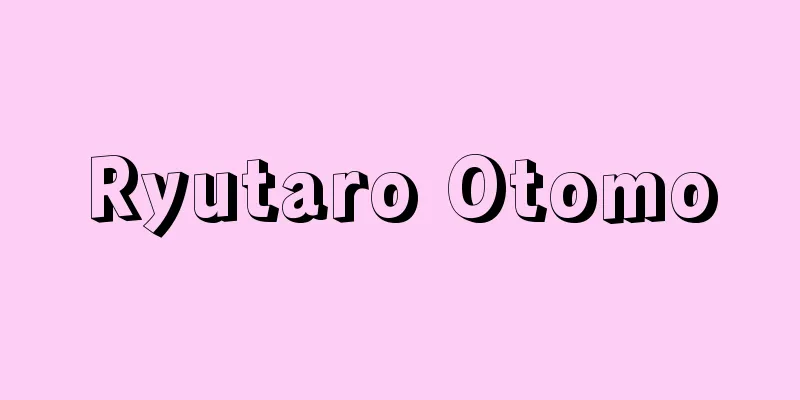Yodoya Koan

|
Year of death: Kan'ei 20 (1643) Year of birth: Tensho 4 (1576) A wealthy merchant in Osaka in the early Edo period. His surname was Okamoto, his given name was Genkoan, and his pen name was Genkoan, with Koan being an abbreviation of Genkoan. It is said that Genkoan and his successors took the name Saburouemon for generations, the pen name Koan, and the common name Tatsugoro. His father, Yodoya Tsuneyasu, completed the development of the "Tsuneyasu-kenchi" land in Nakanoshima in 1619 (Genwa 5), and he lived there and opened the Tsuneyasu-cho family home, which made Genkoan the head of the Yodoyabashi family in Jusannin-cho (present-day Kitahama 4-chome, Chuo-ku, Osaka). In the same year, together with Tobaya Hikoshichi, he applied for the development of Tsumura Kayashima as a representative of salted fish merchants, and with the approval of the Osaka magistrate, they developed the new land, laying the foundation for the development of Shin-Ubushi-cho, Shin-Tenma-cho, and Kaifu Horikawa-cho, where salted and dried fish and dried sardine merchants gathered. In 1631, the privilege of receiving itowarifu, which had previously been limited to Sakai, Kyoto, and Nagasaki, was also granted to Edo, so Gento, together with Kawasakiya Jizaemon, the head elder of the Kitagumi, requested the Nagasaki magistrate to allocate it to Osaka as well, and the following year, he applied to the shogunate, which made the request a reality. Gento's loan to daimyo is the only case of this kind supported by historical documents discovered to date, a loan of 150 kanme of silver to the Hagi domain in 1631. There is no doubt that he was a wealthy merchant who contributed to the development of Osaka as a commercial city directly controlled by the shogunate, but many of his deeds are in the realm of legend and are not clear. He had an appreciation for elegance, enjoyed the tea ceremony, was on friendly terms with Kobori Enshu and Shokado Shojo, was fond of linked verse, and excelled in caricature, painting miscellaneous portraits of people, flowers, and birds. <References> Saburo Yokoyama, "Current Status of Yodoya Historical Materials" (Senba, No. 3), Yasuhiro Mori, "Yodoya and the Hagi Domain" (Mataji Miyamoto, ed., Studies on Kamigata, Vol. 1) (Yasuhiro Mori) Source: Asahi Japanese Historical Biography: Asahi Shimbun Publications Inc. About Asahi Japanese Historical Biography |
|
没年:寛永20(1643) 生年:天正4(1576) 江戸前期大坂の豪商。姓は岡本,名は言当,号は玄个庵,个庵は玄个庵の略称という。言当とその後継者は代々,三郎右衛門を名乗り,号は个庵,通称は辰五郎であったといわれている。父の淀屋常安が元和5(1619)年,中之島の「常安請地」開拓を竣工させ,ここに居住して常安町家を開いたことにより,言当はそれまでの十三人町(現在の大阪市中央区北浜4丁目)淀屋橋家の当主となった。同8年鳥羽屋彦七と共に,塩魚商人の代表者として津村の葭島の開発を出願,大坂町奉行の認可を得て新地を造成し,塩干魚,干鰯商の集居する新靭町,新天満町,海部堀川町の発展の基を築いた。また寛永8(1631)年,従来は堺,京都,長崎に限られていた糸割符の特権が江戸にも与えられることになったので,言当は北組惣年寄の川崎屋治左衛門と共に,それが大坂にも配分されるよう長崎奉行に依頼し,翌年幕府へも出願して,実現させた。言当の大名貸については,寛永18年萩藩への銀150貫目貸付がこれまで発見された史料に裏付けられた唯一の事例である。幕府直轄商業都市としての大坂の発展に貢献した豪商であったことは間違いないが,その事跡の多くは伝説の域にあって明らかではない。風流を解し,茶事を嗜み,小堀遠州,松花堂昭乗と親交があり,連歌をよくし,戯画に長じて人物花鳥雑画を描いたという。<参考文献>横山三郎「淀屋史料の現段階」(『船場』3号),森泰博「淀屋と萩藩」(宮本又次編『上方の研究』1巻) (森泰博) 出典 朝日日本歴史人物事典:(株)朝日新聞出版朝日日本歴史人物事典について 情報 |
>>: Stagnation point - stagnation point
Recommend
butane
C 4 H 10 (58.12). CH 3 (CH 2 ) 2 CH 3 . A saturat...
Blast furnace - kouro (English spelling)
Another name for a blast furnace. A furnace used ...
Reith, JCW (English spelling) ReithJCW
...However, recognizing the power and importance ...
Imperial Court ritual ceremony
…It is also called "Gosaie" or "Os...
Moser, L. (English spelling) MoserL
...The court style that flowed in from Paris and ...
Diary literature - Nikkibungaku
Japan Diaries were related to the establishment a...
Malnutrition (Emaciation)
What is the disease? Generally, emaciation is dia...
Abutilon megapotamicum (English name) Abutilonmegapotamicum
…[Yoshishige Tachibana]. … *Some of the terminolo...
Khitan small script - Khitanshoji
…The Liao script used to write the Khitan languag...
Sverdrup
Norwegian oceanographer and meteorologist. Graduat...
Pelecyphora pseudopectinata (English spelling)
... E . pentalophus var. procumbens (Eng.) Krainz...
Mináč, V. (English spelling) MinacV
…A Central European republic that existed from 19...
Karl IX
...Then Johan III (reigned 1568-92) elevated Finl...
Christopher
…This title caused great controversy when Nestori...
Cystidia truncangulata (English spelling)
…[Hiroshi Inoue]. … *Some of the terminology that...









